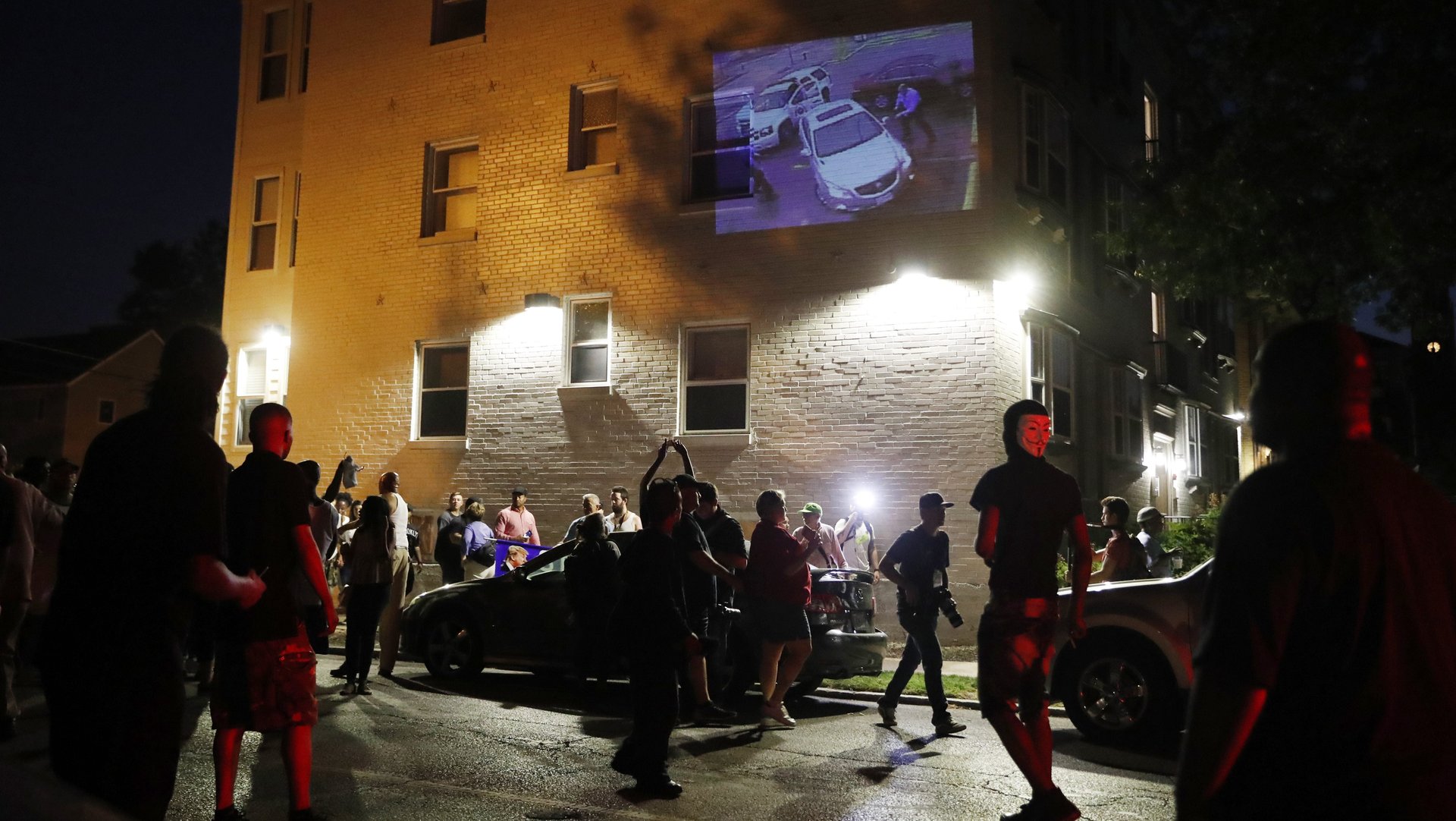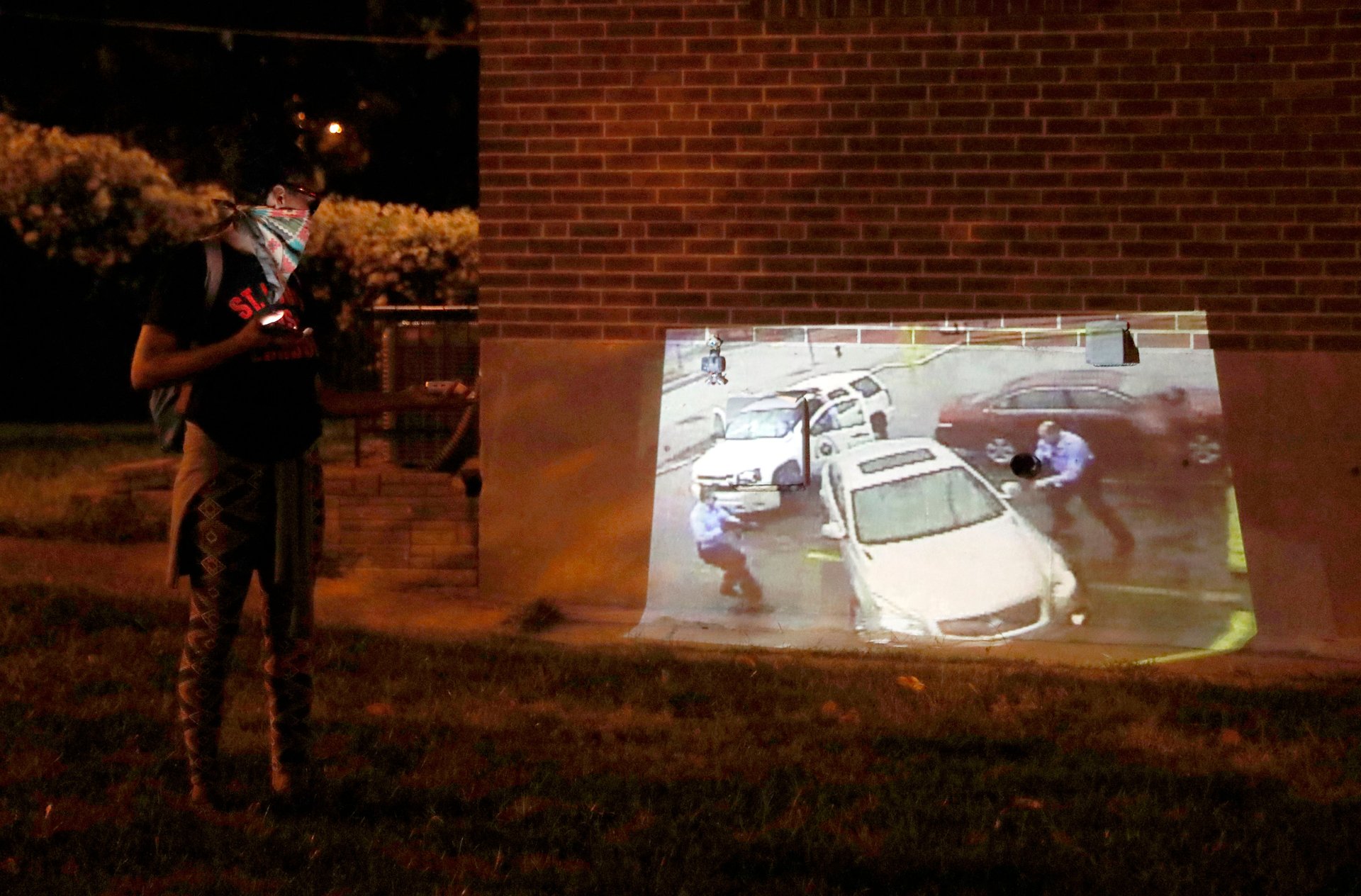A poignant image from St. Louis captures the importance of video in prosecuting police shootings
Protests took many forms in St. Louis, Missouri, this weekend, following the acquittal of a white police officer who fatally shot Anthony Lamar Smith in 2011. There were peaceful marches, a “die-in” in front of St. Louis police headquarters, marches through shopping malls, and protests that took a more destructive turn, ending with property damage and over 80 arrests.


Protests took many forms in St. Louis, Missouri, this weekend, following the acquittal of a white police officer who fatally shot Anthony Lamar Smith in 2011. There were peaceful marches, a “die-in” in front of St. Louis police headquarters, marches through shopping malls, and protests that took a more destructive turn, ending with property damage and over 80 arrests.
One poignant protest happened on the side of buildings, as protesters used video projectors to display frames from footage shown in the trial. Video was a key aspect of St. Louis police officer Jason Stockley’s trial. Prosecutors argued that surveillance footage showed Stockley planting a handgun in the victim’s car, while in police dash cam footage released only last year, Stockley can be heard vowing to kill Smith.

Video has become the centerpiece of several high-profile police shootings in the US. Surveillance footage showed Cleveland police officers shooting 12-year-old Tamir Rice in 2014; eyewitness cell phone footage captured the 2015 police shooting of Walter Scott in North Charleston, South Carolina; and dash cam and Facebook Live video revealed the build-up and aftermath of Philando Castile’s death at the hands of a Minnesota officer in 2016.
Guerrilla video projections have also risen in popularity as a protest tool. Used during Occupy Wall Street and in demonstrations against US president Donald Trump, the projected image, slogan, or symbol offers protestors a literal beacon. For those protesting in St. Louis, hand drawn signs and banners might share a message, but video frames tell their side of the story.